Introduction
Have you ever clicked a button on a website and instantly seen something change—like a form checking your input or a pop-up appearing? That instant interaction is powered by JavaScript.
Often referred to as JS, JavaScript is the backbone of interactive websites. It transforms plain HTML and CSS into something dynamic, engaging, and user-friendly. From simple animations to complex applications like Gmail and Netflix, JavaScript is what makes the modern web truly come alive.
In today’s digital world, every aspiring web developer needs to understand JavaScript. It’s not just another programming language—it’s the universal tool that connects frontend, backend, and even mobile app development.
-
Why JavaScript is Everywhere
JavaScript has evolved tremendously since it was introduced in 1995. Today, it powers more than 98% of all websites worldwide, making it the most widely used programming language in web development.
Here’s why JavaScript is so essential:
- It runs in all browsers without any extra setup.
- It works hand-in-hand with HTML and CSS, forming the foundation of web development.
- It supports powerful frontend frameworks like React, Angular, and Vue.
- It powers backend systems through Node.js, which is used by companies like Netflix, LinkedIn, and Uber.
- It builds mobile applications with React Native and desktop apps with Electron.
Simply put, wherever there’s the internet, there’s JavaScript.
-
Beginner-Friendly Syntax
One of the reasons JavaScript is so popular is its simplicity. The syntax is flexible and easy to learn, making it beginner-friendly. Let’s look at some of the basics.
Variables & Data Types
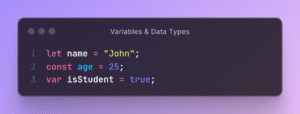
- let is used for values that can change.
- const is used for values that stay the same.
- var is the older way of declaring variables (still works but is less preferred today).
Operators & Expressions
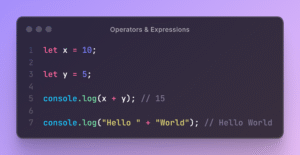
Functions
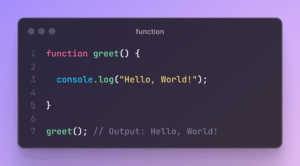
Functions allow you to group code together and reuse it whenever needed.
Conditions & Loops
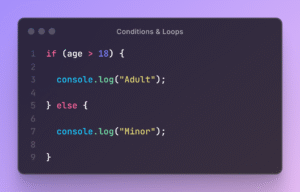
Conditions and loops help websites make decisions and repeat tasks automatically.
Arrays & Objects
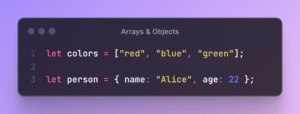
Arrays store lists of items, while objects store structured information.
With just these basics, you can already start building interactive websites.
-
Real-World Applications of JavaScript
JavaScript is not just something you learn for practice—it’s used in the real world to build some of the most popular platforms we use every day.
- Dynamic Websites: Used for forms, animations, sliders, and pop-ups.
- Web Apps: Applications like Gmail, Google Docs, YouTube, and Twitter are all powered by JavaScript.
- Backend Development: With Node.js, companies like Netflix and LinkedIn handle millions of users efficiently.
- Mobile Apps: React Native enables developers to build apps for both Android and iOS.
- Game Development: Simple browser games, like the Google Chrome T-Rex runner, are built with JavaScript.
- AI and Machine Learning: TensorFlow.js allows machine learning models to run directly in the browser.
No matter what your interest is—websites, apps, games, or even artificial intelligence—JavaScript plays a role in it.
-
Why Beginners Should Learn JavaScript First
If you’re new to coding, JavaScript is the perfect place to begin. Here’s why:
- Easy to Start: You can write and run JavaScript directly in your browser console.
- Strong Community Support: With millions of developers worldwide, you’ll always find tutorials, forums, and resources to help you learn.
- High Demand in Jobs: Frontend, backend, and full-stack developers all rely on JavaScript, making it one of the most in-demand skills.
- Foundation for Advanced Learning: Popular frameworks like React, Angular, and Vue are built on JavaScript fundamentals.
Learning JavaScript opens the door to becoming a complete web developer.
Conclusion
JavaScript is more than just a programming language—it’s the language of the web. It powers everything from interactive websites to large-scale applications that millions of people use daily.
If you’re a beginner, you don’t need to wait for complicated tools or setups. Open your browser, go to the console, and type:
console.log(“Hello, World!”);
That single line means you’ve already written your first piece of code in JavaScript.
From here, the journey only gets more exciting. Explore DOM manipulation, event handling, and frameworks—and most importantly, build projects. The more you practice, the stronger your skills will become.
Takeaway: Learning JavaScript is the first step toward becoming a web developer. Start small, stay consistent, and you’ll be amazed at how quickly you can create something meaningful.



